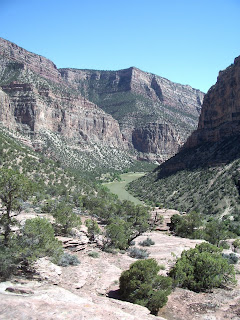I spent yesterday hiking above and west of the town of Ouray Colorado. At one point we had an awesome view of what is locally known as "the blowout". This highly mineralized area is actually a Larimide intrusion effectively marking the center of the Ouray Mining District. At about the turn of the era (late Cretaceous-early Paleogene), Colorado was upset with numerous magma invasions along an ancient (Precambrian) structural zone, called the Colorado Mineral Belt. The blowout is just our little part of the whole belt. The mines in the area are all related to the laccolith that forms the blowout. I found an older paper, written in 1947 that suggests that the center of the mineralization was mainly magnetite-pyritic ores with little gold and silver but that just a short distance outward ores containing pyritic gold and even some native gold could be found. As this fall rolls around, I hope to climb up and explore some of the mines in the area and will try to share my findings. My background is notoriously blank in geo-chemistry and so as usual I will keep things simple.
I just saw that this is post #100!
The blowout, now known as a source of gravel when the afternoon summer thunderstorms deluge the small catchment area.
 Another view. You can just make out parts of town in the lower left.
Another view. You can just make out parts of town in the lower left.




